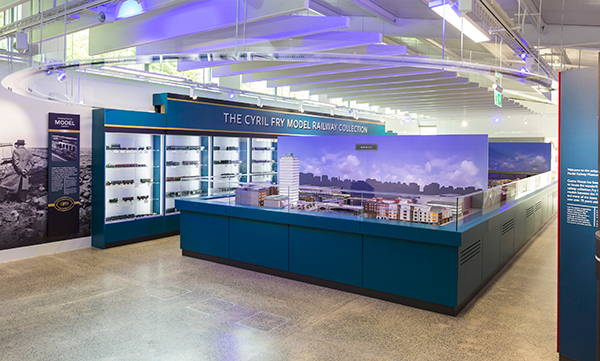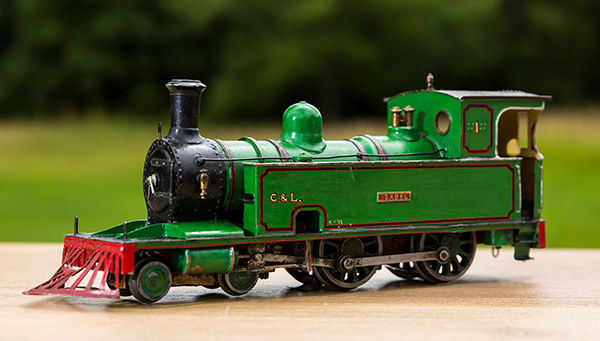Casino Model Railway Museum
Published in Issue 3 (May/June 2021), Reviews, Volume 29Malahide, Co. Dublin
http://www.modelrailwaymuseum.ie
By Tony Canavan
As the COVID lockdown continues, Museum Eye again goes online to visit an exhibition. Among the more interesting offerings is the Casino Model Railway Museum. Its website is well laid out and straightforward. Although it is aimed at people who visit in person (with details of location, opening hours, etc.), it is still worth a look for a virtual visit.
The museum is based on the amazing work of Cyril Fry, whose handcrafted models form the basis for a study of rolling stock and the history of railways in Ireland. Trainspotting may not be of interest to everyone, but the models on display will surely appeal even to those with no interest in trains or railway history. The website explains that the museum is housed in a cottage with its own history. It was built as a shooting lodge at the beginning of the nineteenth century by Richard Wogan Talbot. The Talbot family have lived in Malahide for over 800 years, and Richard Wogan Talbot was the 2nd Baron as well as a career soldier. He was also an MP from 1806 until his retirement in 1833. In the 1920s the Kirker family moved into the house. Dr John Gilbert Kirker was president of the Royal College of Physicians and went on to help establish the Irish Epilepsy Foundation in the 1960s.
A short video presents an overview of what is on display, offering our first view of the models. These are not just of trains on tracks; whole landscapes are recreated, from fields and hills to stations and city streets. Many well-known buildings are constructed in miniature as trains from different eras travel past them. There is an amazing array of trains, trams and memorabilia on display in a state-of-the-art modern museum. It is remarkable that this hi-tech facility exists in a 200-year-old thatched cottage.

Above: Whole landscapes are recreated. Note the model of Liberty Hall, adjacent to Butt Bridge and the Loopline Bridge, in the foreground.
[wide shot]
Fry spent his spare time building over 350 precision-made models and created an elaborate layout in his attic to display them. This complex layout included signal lights and level-crossing barriers, which all worked automatically. He often used original plans and drawings from the railway companies to get the exact details and scale. All of the individual details, such as wheels and doors, were made with their own moulds, which were then filled with hot metal. Once the pieces had cooled, they were filed into shape and then hand-painted with a brush so fine that Fry could add his name to each model. He even built models of Dublin, Cork and Belfast stations, while his model trains ranged from the ‘Hibernia’, the country’s first steam locomotive, to trams and diesel and electric engines of the 1950s. There is a great photograph of a Dublin tram from the early twentieth century bearing an advertisement for Johnston, Mooney & O’Brien’s bread.

Above: A model of ‘Isobel’, a locomotive that served the Cavan and Leitrim (C&L) line until 1949.
Before he died in 1972, Fry was anxious that his models be kept for posterity. They first went on public display in 1988, when an exhibition opened at Malahide Castle and continued until its closure in 2011. However, it helped form the basis of the Casino Model Railway Museum, which is owned by Fingal County Council. This museum project was made possible by the donation of €1.5m in 2012 by local man Micheál Gaffney and significant investment by Fingal County Council.

Above: A model of the narrow-gauge West Clare railway, immortalised in song by Percy French’s Are you right there, Michael?.
As can be seen from the website, the museum has not just models of railways and their settings but also information panels and interactive screens with photographs and texts filling in the background and context of the railways on display. When visitors can visit the museum in person, there are a number of attendants to show them around and give their own insight into Cyril Fry’s work.
This website may not be very elaborate or complicated but it is an interesting insight into the legacy of Cyril Fry and gives a good idea of what the actual museum has to offer. You don’t have to be a railway buff to appreciate it and, when the lockdown is over, I’ll certainly be making my way to Malahide for a visit.
Tony Canavan is Consultant Editor of Books Ireland.
















